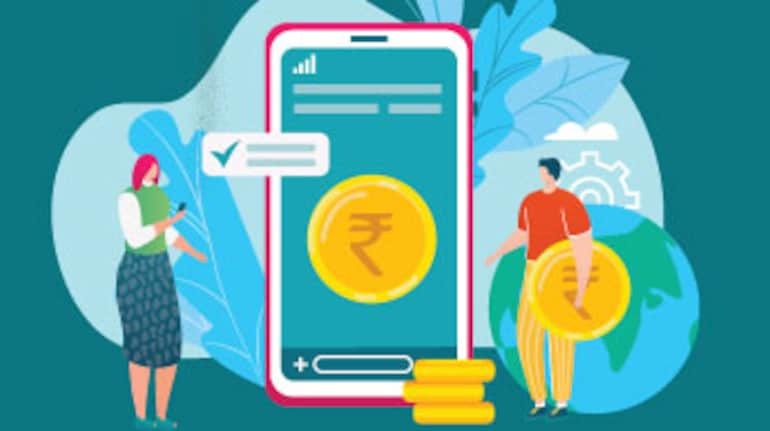



A month after the Reserve Bank of India (RBI) launched the pilot for a wholesale central bank digital currency (CBDC), it has kick-started the pilot for the retail version which goes live today. The retail digital rupee, or e₹-R, can be used by people for day-to-day transactions.
With both wholesale and retail pilots live in the country, the RBI has joined 17 other central banks including those of China and South Korea whose pilots are underway. Over 60 central banks have expressed interest in launching their own digital currency and a total of 105 countries are at various stages of exploring the technology. With these pilots, India joins a global movement which is being seen as the next step of the evolution of currency.
The RBI on November 29 while announcing the pilot said that the implementation will be done in phases in partnership with a few banks and in some cities to start with and the scope will later be scaled up.
The pilot will be implemented among a small group of customers and merchants, starting with the four cities of Mumbai, New Delhi, Bengaluru and Bhubaneswar. It will in the next phase be extended to Ahmedabad, Gangtok, Guwahati, Hyderabad, Indore, Kochi, Lucknow, Patna and Shimla.
While the e₹-R is built for customers like us, what does it exactly do and why is it different from current digital transactions through wallets and the Unified Payments Interface (UPI)? Here are five things to know about the e₹-R.
What is CBDC?
The RBI defines CBDC as legal tender issued by a central bank in a digital form. It is similar to sovereign paper currency, but in a digital form and is exchangeable at par with the existing currency. Meaning, Rs 100 in CBDC form is the same as Rs 100 in the form of notes.
The key difference here is that a CBDC is issued directly by the RBI, not by banks, and will appear as liability on its balance sheet.
The foundational principles and core features for a CBDC have been laid down by the Bank for International Settlements and serve as guiding principles for central banks globally.
Use cases
The RBI said that in the current phase of the pilot, e₹-R can be used for person-to-person (P2P) and person-to-merchant (P2M) payments.
Mihir Gandhi, partner and leader for payments transformation at PwC India, said, “Key use cases may be programmable payments, cross-border payments with immediate benefits of lower cost of printing and managing currency, instant payments and finality of settlement and enhanced safety.”
The RBI also said that the e₹-R will offer features similar to that of physical cash like trust, safety and settlement finality. “As in the case of cash, it will not earn any interest and can be converted to other forms of money, like deposits with banks,” RBI added.
How will transactions work?
The RBI has identified four banks to be part of the initial phase of the pilot which will help the central bank to distribute the e₹-R. Similar to current digital transactions, the RBI said that transactions can be executed through wallets offered by participating banks.
Users can make payments to other users who are a part of the pilot, and e₹-R will also be interoperable with existing bank accounts. This means that users can transfer funds between their CBDC accounts and bank accounts eventually. For merchant transactions, customers will be able to scan QR codes to make payments.
How is this different from UPI?
The key difference is that customers accessing CBDC will have to open a separate CBDC account which will be connected to the RBI’s server. The transactions will not take place on the bank’s server like UPI, wallet, National Electronic Funds Transfer (NEFT) or Immediate Payment Service (IMPS) transactions. Instead, the transactions will be executed and recorded on the RBI’s blockchain.
Monish Shah, partner at Deloitte, explained, “e₹-R is digital currency representing cash issued by the central bank and is non-interest-bearing. It's different from UPI which is an actual debit and credit from one bank account to another.”
“Once implemented, it will also give more benefits where users can create programmable money, meaning you can earmark money for specific end uses. This may be helpful in the case of direct benefit transfers and other disbursals to ensure that the money is being used for the reason it has been given. It will help reduce the overall physical cash in the economy and make the system more efficient,” he added.
Banks in the picture
The first four banks that will be a part of the pilot are State Bank of India, ICICI Bank, Yes Bank and IDFC First. Four more banks—Bank of Baroda, Union Bank of India, HDFC Bank and Kotak Mahindra Bank—will join this pilot subsequently, the RBI said. As of now, the RBI has not involved fintechs like PhonePe, Google Pay and Paytm, which are UPI leaders, in the pilot. With banks on board, users will be accessing CBDC through the apps of the banks and wallets provided by them.
Discover the latest Business News, Sensex, and Nifty updates. Obtain Personal Finance insights, tax queries, and expert opinions on Moneycontrol or download the Moneycontrol App to stay updated!
Find the best of Al News in one place, specially curated for you every weekend.
Stay on top of the latest tech trends and biggest startup news.